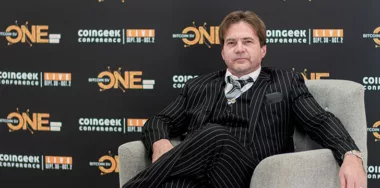CoinGeek’s Chief Bitcoin Historian Kurt Wuckert Jr. was recently on the Cryptology show where he discussed the trial of the century, why DeFi in its current form violates securities laws, why the Lightning Network will crumble, the Gorilla DAO, and more. He also talked about why he believes Dr. Craig Wright is Satoshi Nakamoto.
Kurt has been in the Bitcoin industry since 2012 and being one of the early adopters, he has seen it all—making him the ideal Bitcoin historian. During the years, he has seen Bitcoin change from being an idealistic project that Satoshi and other early developers like Gavin Andresen and Mike Hearn worked on to becoming a project that is more about making money than changing the world, headed by a new-age cartel of people like Greg Maxwell to now being restored to its roots as Bitcoin SV.
Kurt kicked off by discussing the trial of the century—Kleiman v Wright. Ira Kleiman’s brother David was one of the people whom Craig turned to for input when he was developing Bitcoin. Craig has always been clear that he was the architect and that David helped him with some editing. After David’s death in 2013, Ira went after Craig, culminating in the trial in Florida.
When the trial started, mainstream media outlets seemed resistant to cover it, as did pro-BTC outlets in the digital currency industry. On the first day of the trial, it was just Kurt and two other people in the courtroom covering the historic Bitcoin creator trial in Florida—but then the world woke up to the impact the trial could have on the future of Bitcoin, resulting in days with a packed courtroom, Kurt recounted.
Craig is Satoshi
Kurt has been a big blocker “since that was a thing.” He believes in the Satoshi vision of Bitcoin not having a scaling ceiling and has been supporting projects that seek to make this a reality. He was a BCH supporter since it was the first implementation that supported bigger blocks, but he said even BCH became corrupted after some time, and the big blockers pursued Satoshi’s vision as BSV.
“Bitcoin without limits makes Ethereum and the others unnecessary. What we’ve proven with BSV is that we can do 100,000 transactions a second including smart contracts and NFTs. You can put the world’s economy on-chain today using BSV, full proof of work, no compromise on what the original Satoshi client stood for,” he stated.
“And ultimately, it’s Craig Wright who pushed that narrative, even when nobody else was pushing it. Craig pushed it harder than anyone else,” he added.
This was how Kurt became a follower of Craig, even when he had become an unpopular figure in the blockchain industry. Over time, Craig has been proven right on many of the things he has pushed for Bitcoin over the years.
This, as expected, hasn’t sat well with many people in the industry. They want him to shut up, because implementing his vision for Bitcoin would invalidate many of the projects they are building, and right now, these people are making so much money from these projects.
Craig’s vision is being implemented in Bitcoin SV, with no artificial block size limits and with a full Turing complete Script stack, “which is kind of a smart way of saying you can program smart contracts in it,” Kurt went on. Its implementation invalidates many of the blockchain projects that claim to solve Bitcoin’s insufficiencies, such as Solana, Cardano, and Ethereum.
For instance, Bitcoin’s apparent inability to scale is what has led to the birth of many of these projects. However, this is just a lie peddled by the BTC faction, which has fought very hard to keep the block size limited.
Satoshi’s vision of Bitcoin, which is BSV, already scales to meet the needs of mainstream adoption.
“There are days when there are more transactions occurring on Bitcoin SV than the entire rest of the blockchain economy combined,” Kurt stated.
And unlike Ethereum and its kind, which clog and fees shoot up when transactions increase, on BSV, “as transaction volume goes up, the fee per transaction goes down.”
Gorilla DAO, DeFi, and Lightning Network
Kurt also talked about DAOs, which are becoming increasingly significant these days. In the U.S., the first legally recognized DAO was registered this year, although it has encountered a few regulatory issues with its token registrations. The Gorilla DAO is the trailblazer in the Bitcoin SV space and has been quickly evolving since its formation.
Gorilla DAO sells its utility tokens, and the funds go to a treasury which the members can democratically decide what to do with it. It has already minted gold and silver coins in partnership with Zatoshi, which sold out fast.
As Kurt revealed, he suggested that after minting the tokens, the next project should be a mining pool. The GorillaPool launched a few months ago, and at one point in October, it mined the largest Bitcoin transaction in history.
Aside from DAOs, DeFi is the other area in the blockchain space that has become extremely popular. But as Kurt observed, while the idea of peer-to-peer lending is noble, DeFi today is purely about token speculation. Even for those who do yield farming, the idea is that they will get some tokens that they hope will ‘go to the moon.’
There’s a future for DeFi, however. Before it becomes a thriving mainstream industry, there’s much that needs to change. Currently, many DeFi platforms already violate securities regulation, especially where the founders hold a significant amount of tokens from the start.
Kurt also addressed one of the most misconstrued features in the Bitcoin space—the Lightning Network on BTC. While BTC maximalists hail it as the solution to BTC’s issues, Kurt believes it’s a corruption of the Satoshi vision.
For starters, Lightning is not a Layer 2 network on BTC. Kurt debunked the misconception. Users stake their BTC on a smart contract and receive a 1:1 token to transact on a non-PoW ledger. Once a user transacts, the nodes on the network ‘bounce trades off each other.’
“Rather than broadcasting to a network that is Sybil resistant and Byzantine tolerant because it’s a small world network and has proof of work, what you’re doing is trusting nodes based on stake and believing they function for either profits or altruistic reasons,” he noted.
Lightning nodes also violate regulations, Kurt argued. Running such a node makes you a money service business as you’re transferring people’s money.
Having a cybersecurity background himself, Kurt also revealed many security loopholes within the Lightning Network. “In fact, within the first two years, more people were losing funds than even having successful transactions,” he stated.
He concluded by revealing why Craig chose the name Satoshi Nakamoto as his pseudonym.
“Satoshi is a nickname basically coming from Ash Ketchum which is from Pokémon. Craig is a big Pokémon fan. Nakamoto is the name of basically the Japanese Adam Smith.”
CoinGeek features Kurt Wuckert Jr. in recap coverage which will be livestreamed daily at 6:30 p.m. EST on our YouTube Channel.
Check out all of the CoinGeek special reports on the Kleiman v Wright YouTube playlist
New to blockchain? Check out CoinGeek’s Blockchain for Beginners section, the ultimate resource guide to learn more about blockchain technology.








